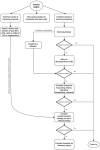Angina in 2022: Current Perspectives
- PMID: 36498466
- PMCID: PMC9737178
- DOI: 10.3390/jcm11236891
Angina in 2022: Current Perspectives
Abstract
Angina is the main symptom of ischemic heart disease; mirroring a mismatch between oxygen supply and demand. Epicardial coronary stenoses are only responsible for nearly half of the patients presenting with angina; whereas in several cases; symptoms may underlie coronary vasomotor disorders; such as microvascular dysfunction or epicardial spasm. Various medications have been proven to improve the prognosis and quality of life; representing the treatment of choice in stable angina and leaving revascularization only in particular coronary anatomies or poorly controlled symptoms despite optimal medical therapy. Antianginal medications aim to reduce the oxygen supply-demand mismatch and are generally effective in improving symptoms; quality of life; effort tolerance and time to ischemia onset and may improve prognosis in selected populations. Since antianginal medications have different mechanisms of action and side effects; their use should be tailored according to patient history and potential drug-drug interactions. Angina with non-obstructed coronary arteries patients should be phenotyped with invasive assessment and treated accordingly. Patients with refractory angina represent a higher-risk population in which some therapeutic options are available to reduce symptoms and improve quality of life; but robust data from large randomized controlled trials are still lacking.
Keywords: beta-blockers; calcium channel blockers; coronary artery disease; nitrates; stable angina.
Conflict of interest statement
The authors declare no conflict of interest.
Figures


References
-
- Vos T., Lim S.S., Abbafati C., Abbas K.M., Abbasi M., Abbasifard M., Abbasi-Kangevari M., Abbastabar H., Abd-Allah F., Abdelalim A., et al. Global Burden of 369 Diseases and Injuries in 204 Countries and Territories, 1990–2019: A Systematic Analysis for the Global Burden of Disease Study 2019. Lancet. 2020;396:1204–1222. doi: 10.1016/S0140-6736(20)30925-9. - DOI - PMC - PubMed
-
- Neumann F.J., Sechtem U., Banning A.P., Bonaros N., Bueno H., Bugiardini R., Chieffo A., Crea F., Czerny M., Delgado V., et al. 2019 ESC Guidelines for the Diagnosis and Management of Chronic Coronary Syndromes. Eur. Heart J. 2020;41:407–477. - PubMed
Publication types
LinkOut - more resources
Full Text Sources

